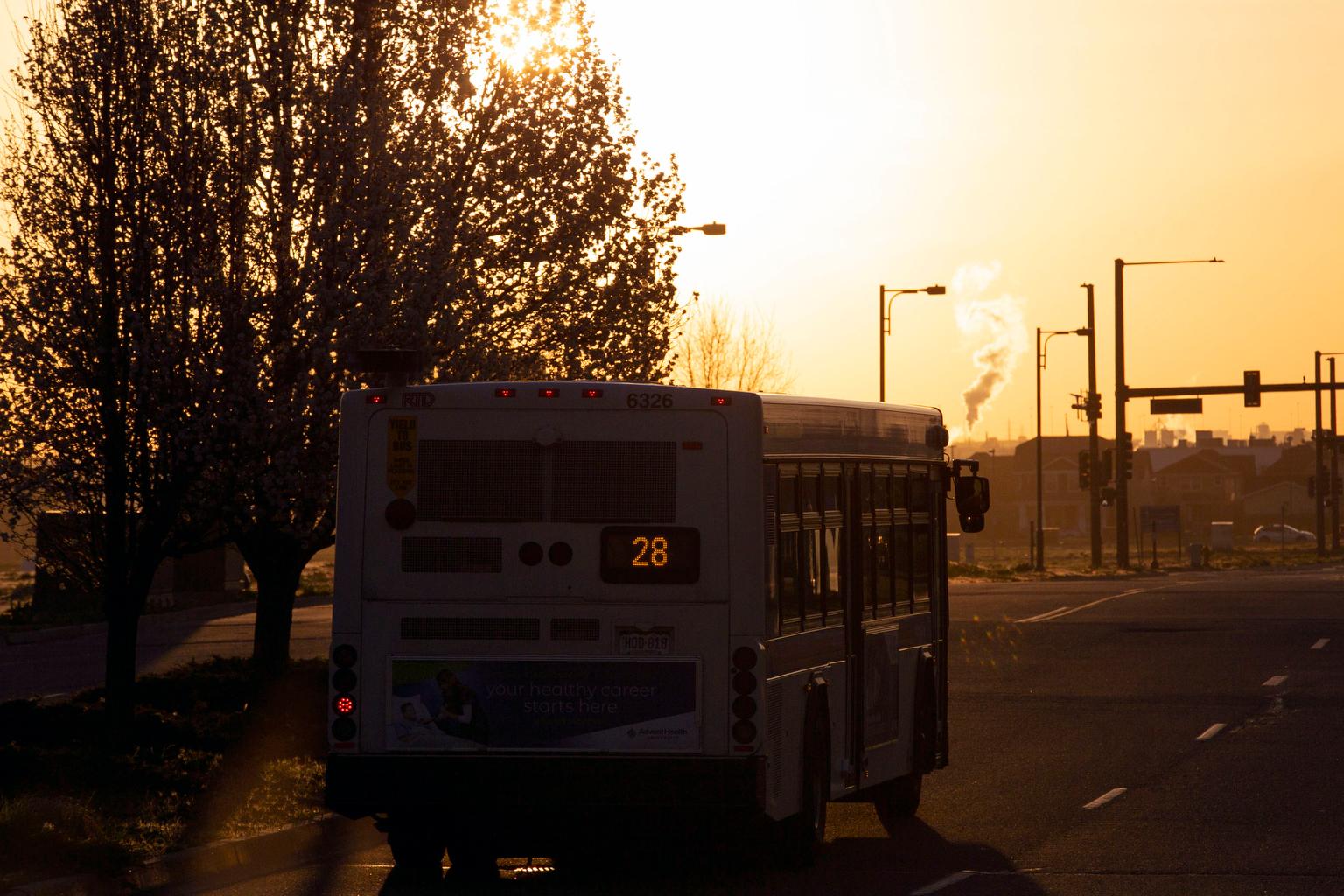
The Regional Transportation District offered a peek this week at how its bus network could change in 2021.
The revamp is part of RTD’s “Reimagine” process, which the agency launched to put itself on more stable financial footing.
Consultants on Tuesday presented the board with four different service scenarios, each emphasizing a different objective — from maximizing ridership by focusing on dense areas to stretching service across RTD’s sprawling district.
“I’ll be frank, not everybody is going to like the tradeoffs,” Bill Sirois, RTD’s senior manager of transit-oriented communities, told the board earlier this year. “There will be winners; there will be losers.”
Each scenario takes into account an 8 percent cut from pre-pandemic service levels. The final product will almost certainly include greater cuts; the extent of which will become clear as more coronavirus-era economic data trickles in. Suggested changes to the light rail system will come later this year.
But for now, the maps are useful to get a sense of how service may change. More details about each scenario are in this slide deck. Here’s what they look like.
Service Quality
This scenario focuses on more frequent and speedy bus service on a “select set of transit-supportive corridors.”
- Projected weekday boardings: 404,000
- RTD’s cost per boarding: $3.66
- Percent of district population served: 52 percent
Social Equity
This map prioritizes frequent service for low-income households, minority populations and people who don’t have their own cars.
- Projected weekday boardings: 399,000
- RTD’s cost per boarding: $3.69
- Percent of district population served: 54 percent
Service Productivity
This service plan would try to generate high ridership. It’s very similar to the social equity scenario.
- Projected weekday boardings: 392,000
- RTD’s cost per boarding: $3.80
- Percent of district population served: 51 percent
Geographic Coverage
This map is the only one that keeps commuter buses to the fringes of RTD’s service area — places like Conifer, Evergreen and Nederland. Those tend to be some of the costliest buses, per rider, for RTD to operate. This scenario also relies on FlexRide shuttles to complement bus service in more suburban areas.
But it sacrifices much of the high-frequency network in Denver and inner-rung suburbs.
- Projected weekday boardings: 361,000
- RTD’s cost per boarding: $4.30
- Percent of district population served: 83 percent
It’s entirely possible that the board will choose none of the above. In a brief discussion after the presentation, some board members said they wanted to see hybrids of them.
And an informal poll by the board showed clear support for prioritizing a regional transit backbone while supporting partnerships where communities pay for and operate local service — at least in the more immediate future when RTD’s budget is tightest.
That would mark a significant change for the way metro transit has worked since RTD’s formation about 50 years ago. It’s been the dominant provider since then.
"It's pretty obvious to all of us that we are not able to do the kind of service that we have done in the past, and that we need to look at ways to partner to provide service to areas that need it,” said Denver board member Kate Williams.
But that could be politically difficult unless RTD sends some of its own money to local governments, said board member Natalie Menten of Lakewood.
“The taxpayers may view this as double taxation,” she said.
It’s also possible that some areas that lose service could leave RTD and subsequently stop paying the agency’s 1 percent sales tax like Castle Rock did in 2005.
The board is set to decide on a service plan to go into effect in 2021 before the end of the year.
The coronavirus pandemic is one big reason why RTD is prepared to make significant service cuts, but its budget problems predate the coronavirus turmoil. The agency increased service by 20 percent between 2012 and 2019, RTD CFO Heather McKillop told the board in late 2019. Much of that was financed by debt, she said, and RTD’s revenue didn’t keep up with that growth.
“We have offered and built at a rate that we could not sustain in the future,” she said.
Regardless, the agency is still under pressure — including from Gov. Jared Polis — to deliver major capital projects promised to voters in 2004, like the $1.5 billion B Line extension to Boulder and Longmont. It will also soon open a new commuter rail line to the northern suburbs in September.
In addition, a new external accountability committee convened by key legislators, the governor’s office and the RTD board will begin meeting later in the summer.








